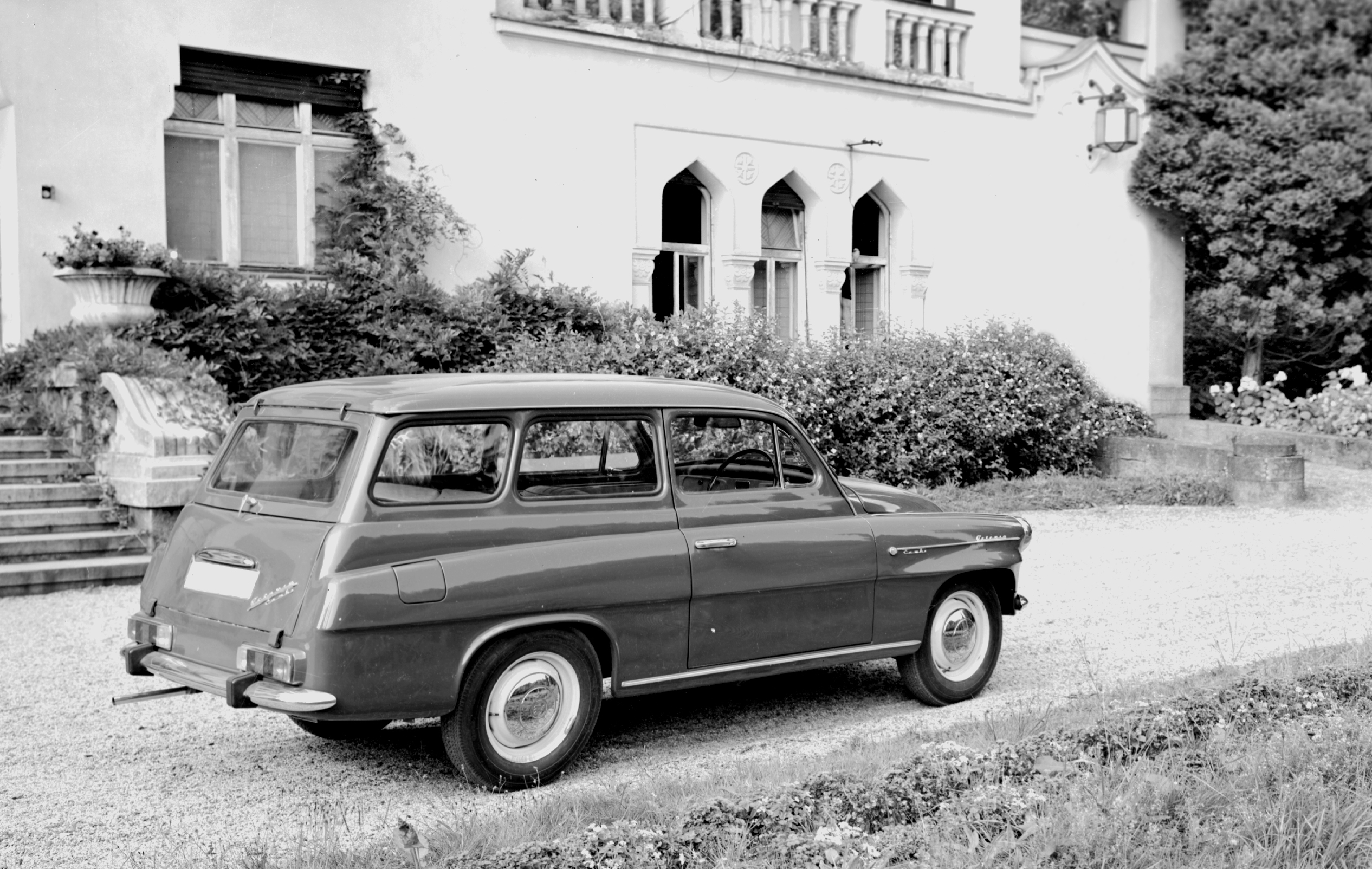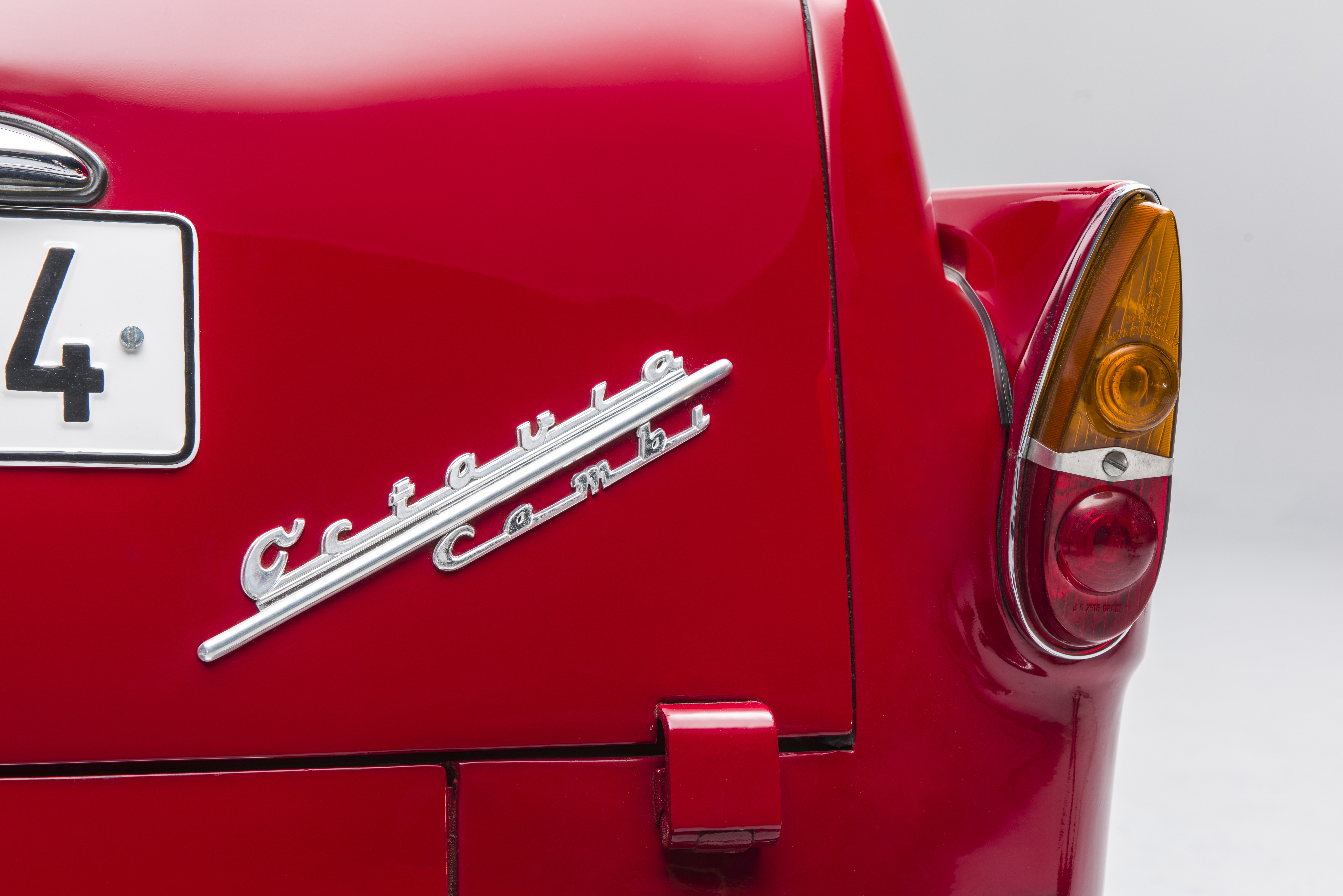Sleeping version at no extra charge
Another Simply Clever feature was the sleeping interior, which all OCTAVIA COMBI cars offered at no extra charge from 1961 onwards. After moving the driver and front passenger seats fully forward, the backrests could be folded down to an almost horizontal position, so that they were at the same level as the rear seats. The rear backrest could then be removed to serve as a pillow. Beginning with the 1968 model, reclining comfort was further improved by the ability to fold the estate’s rear seatbacks backwards as well as forwards.
 The generous interior could be filled with bulky luggage or a sleeping family.
The generous interior could be filled with bulky luggage or a sleeping family.
In 1970, the ŠKODA 110 R coupé became the pride of the Kvasiny factory. And the OCTAVIA COMBI had to free up production capacity for it. Before the Christmas holidays in 1971, the last estate car rolled off the line with serial number 50,244. But it stayed inside the factory gates as the property of the Czech carmaker.
 The OCTAVIA COMBI was also a hit in Norway, Australia and Iceland.
The OCTAVIA COMBI was also a hit in Norway, Australia and Iceland.
After 1971, buyers had to wait another 22 years for a family estate bearing the winged arrow: that was the FORMAN model. The famous OCTAVIA COMBI designation was revived in 1998 with the first generation of the current best-selling model range.

































